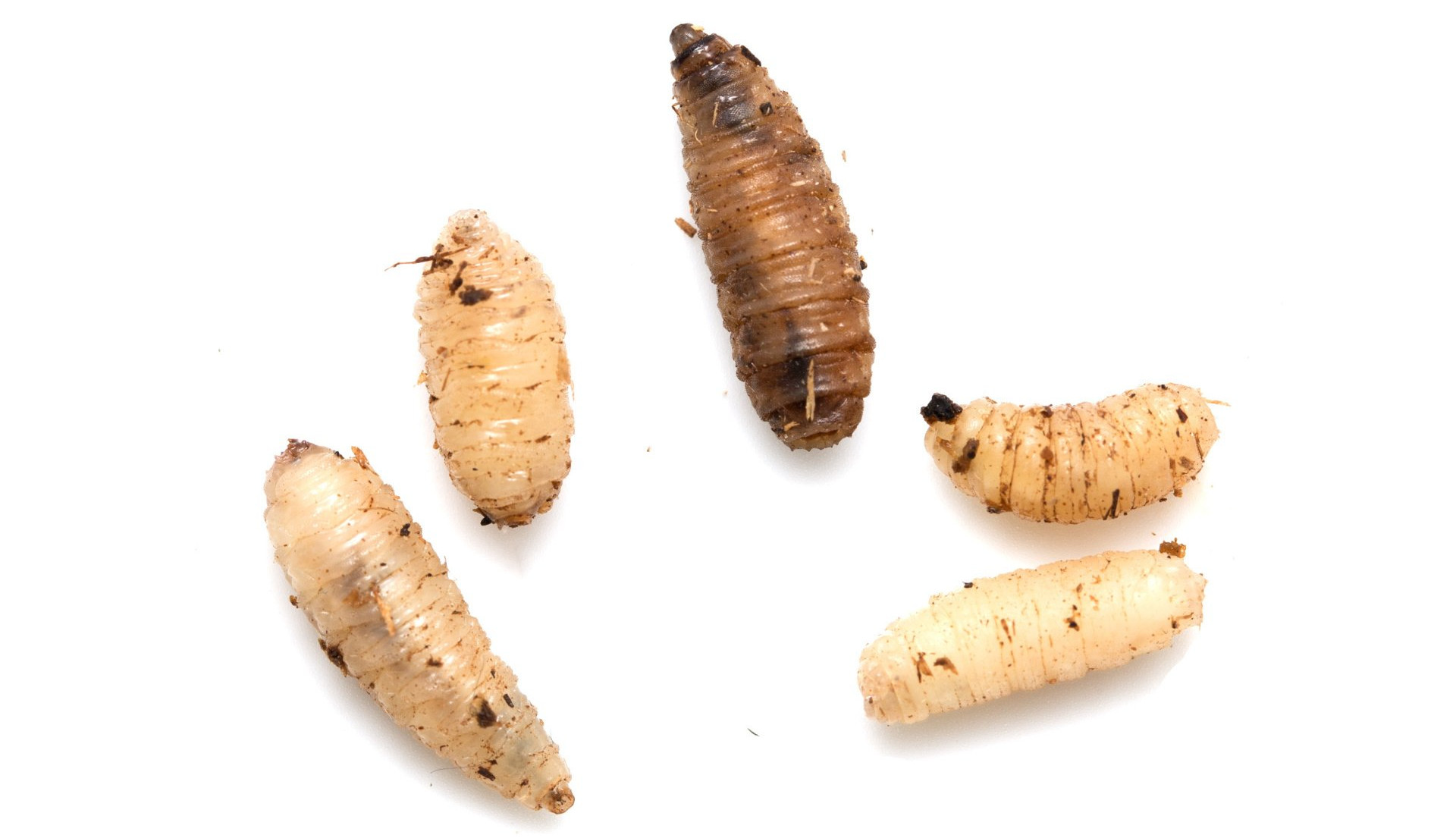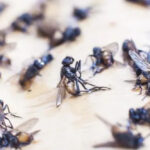Have you ever wondered about those unpleasant, wriggling creatures known as maggots and their sudden appearance, especially in less-than-clean environments? It’s a common question whether these are some sort of independent pest, or if they are connected to something else entirely. The truth is, maggots are not a separate species but rather a stage in the life cycle of a very common insect – the fly. Specifically, maggots are the larval stage of flies, primarily those common houseflies and bluebottle flies we often encounter. Understanding this transformation is key to controlling and preventing maggot infestations in and around your home.
What Exactly Are Maggots?
Maggots are essentially fly larvae; it’s simply another name for this particular phase of a fly’s development. These small, soft-bodied creatures often resemble worms or grubs and are typically cream or whitish in color. They range in size from about ¼ to ½ inch (3 to 20 mm) in length. One of the most distinctive characteristics of maggots is their lack of legs. Instead of legs, they possess hooks near their mouthparts. These hooks are crucial for feeding and movement, allowing them to latch onto food sources and pull themselves along. Interestingly, despite lacking conventional eyes, maggots are equipped with light-sensitive cells distributed across their bodies. Scientists believe these cells act like a diffused sensory system, helping them detect light and shadow, potentially as a defense mechanism against predators and to avoid harsh sunlight. This larval stage is primarily focused on feeding and growth. Maggots typically feed voraciously for 3 to 6 days, accumulating energy and nutrients necessary for their transformation into the next stage of the fly life cycle.
 Maggots feeding on decaying matter
Maggots feeding on decaying matter
The Transformation: From Fly Eggs to Maggots
The appearance of maggots is a direct result of flies laying eggs. Adult female flies are instinctively drawn to environments that will provide a suitable food source for their offspring. This often includes decaying organic matter such as garbage, rotting food, feces, and carrion. A mature fly can lay a significant number of eggs at one time, typically ranging from 75 to 150 eggs in a single batch. These eggs are deposited in clusters on or near the food source. Under favorable conditions, these eggs hatch relatively quickly, usually within 7 to 24 hours, depending on temperature and humidity. Once hatched, the larvae emerge – these are the maggots. Given that adult flies can lay eggs daily, the presence of flies often indicates a high likelihood of maggot development if suitable egg-laying sites are available.
Spotting Maggot Activity in Your Home
An unexplained surge in fly activity within your home can be a telltale sign that maggots are present somewhere nearby. If you notice a sudden increase in flies, it’s a good idea to investigate potential maggot breeding grounds. Start by thoroughly checking and emptying all indoor trash cans. These are prime locations, especially kitchen trash bins where food waste is discarded. Clean the bins themselves to eliminate any lingering food particles. Expand your search to kitchens and pantries, looking for any forgotten or spoiled food items. Rotting fruits, vegetables, or meat can easily attract flies and become maggot nurseries. Don’t overlook less obvious places; sometimes maggots can be found in garbage disposals if food debris accumulates and decays. In more severe cases, a persistent and overwhelming fly problem, coupled with a foul odor, could suggest a deceased rodent within the walls or crawl spaces of your home. The decomposing body can become a significant breeding ground for maggots. Finally, consider outdoor trash cans and dumpsters, particularly if they are situated close to doors or windows. Flies breeding in these outdoor receptacles can easily find their way inside your home as they mature.
Preventing Maggot Infestations
Preventing maggots primarily revolves around eliminating fly attractants and breeding sites. Maintaining a clean and sanitary environment is the most effective strategy. Controlling adult fly populations is also crucial, and this can be achieved through various methods like sticky fly traps, electric fly zappers, or traditional fly swatters. However, even with flies present, they won’t lay eggs and produce maggots if they cannot find suitable food sources. Therefore, the cornerstone of maggot prevention indoors is diligent trash management. Empty indoor trash cans frequently, ideally daily, to remove potential food sources before flies can access them. For outdoor trash receptacles, regular cleaning is essential. Over time, these bins accumulate layers of decaying matter, creating an ideal environment for flies. Rinsing out outdoor trash cans monthly, or even more frequently in warmer months, can significantly reduce fly and maggot problems. Using a bleach solution to sanitize these containers further discourages flies by eliminating odors and residues that attract them. Pet waste management is another important aspect of maggot prevention, especially in yards. Flies are known to lay eggs in animal feces, so regular yard cleanup, particularly dog poop removal, minimizes potential breeding sites. Additionally, ensure that pet food, compost bins, and garbage are securely sealed. This prevents flies from accessing these materials and laying eggs.
How to Get Rid of Maggots Effectively
If prevention measures were not enough and you find yourself dealing with an existing maggot infestation, several methods can effectively eliminate them. One readily available solution is using commercial fly sprays containing pesticides like permethrin. These are designed to kill both adult flies and maggots on contact. For a non-chemical approach, boiling water is remarkably effective. Pouring boiling water directly onto maggots will instantly kill them due to the extreme temperature. A bleach and water solution is another potent option. Bleach is a harsh chemical that is lethal to maggots. A mixture of bleach and water, carefully applied, will eradicate them. Similarly, dish soap containing borax can act as a pest control agent against maggots. Beyond chemical or heat treatments, simple physical removal is also effective. Carefully collect the maggots and the infested material, seal it tightly in a garbage bag, and dispose of it immediately in an outdoor trash can.
FAQs: Understanding the Fly to Maggot Connection
Do maggots come from flies?
Yes, maggots are indeed the larval stage of flies. In essence, “maggot” is just another term for fly larvae. The maggots commonly found in homes in the United States are typically the larvae of houseflies, blue bottle flies, and blow flies. These maggots need a period of feeding and growth, usually several days, before they pupate and eventually transform into adult flies.
What kills maggots instantly?
Several methods can kill maggots almost instantly. Pouring hot water directly on them causes immediate death due to the high temperature. Bleach is a harsh chemical agent that is also rapidly fatal to maggots. Pesticide sprays formulated for flies and maggots, especially those containing permethrin, are designed to kill on contact.
Where do maggots in the house come from?
Maggots appear in homes because adult flies lay their eggs in locations that provide a food source for the hatching larvae. These locations are typically places where decaying organic matter is present. Common sites include trash cans containing rotting food, kitchen sinks where garbage disposals may harbor food scraps, and pantries where perishable food items are stored.
How do you stop maggots from appearing?
Preventing maggots is primarily achieved through consistent cleaning and proper waste management. Flies are less likely to lay eggs in environments that lack readily available food sources for their larvae. Regularly cleaning your home, promptly taking out the trash, and ensuring no rotting food is accessible will significantly reduce the likelihood of maggot infestations.
Conclusion
Understanding that maggots are simply a stage in the fly life cycle is fundamental to controlling them. By focusing on preventing fly breeding through cleanliness, proper waste disposal, and fly control measures, you can effectively minimize the appearance of maggots in your home. Addressing the conditions that attract flies and support maggot development is the most sustainable approach to maintaining a pest-free environment.
